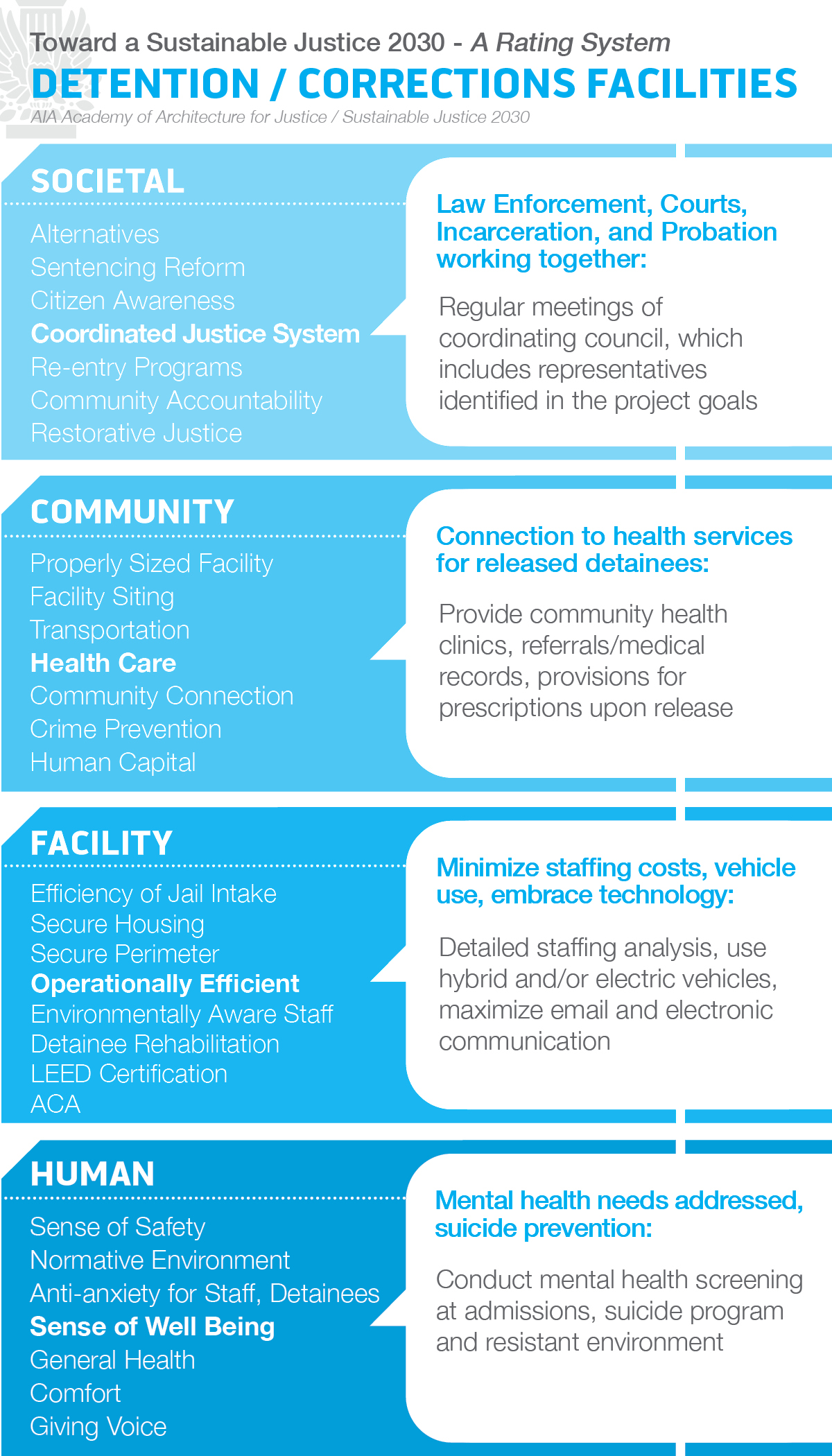By Julia Hughes, AIA, LEED AP BD+C, Associate Principal
Beverly Prior and I first collaborated for sustainable justice in 2006 on a presentation about green juvenile facilities, out of which evolved the AIA Academy of Architects for Justice (AAJ) Sustainable Justice Committee and national activism to establish and promote sustainable justice principles. Today, I serve as Chair of the Sustainable Justice Committee and Beverly is a member of the committee and its former-Chair.
The Sustainable Justice Committee of AIA AAJ strives to put into the lexicon of every planner, designer, owner, and operator, a broader recognition of the role of sustainability in our society and the fundamental concepts of a systems approach to sustainable justice—reaching beyond the materials, methods, and physical and earth energy resource conversation of physical plant construction and performance standards.
Toward this endeavor, the committee has developed the “Green Guide to Justice,” which defines a vision for a comprehensive, integrated, and sustainable justice system and reaches out to industry partners for engagement. The Guide is designed to serve as a voluntary educational tool for early adopters of sustainable design, construction, and operations practices, and to encourage continuous improvement in the justice sector, continued leadership, and increased rigor associated with creating high performance justice environments.
Download the Green Guide to Justice >>
The committee then incorporated the sustainable principles into a custom methodology or scoring system to specifically evaluate justice facilities within the context of a broader definition of leadership for sustainable environments, communities, individuals, and society at-large. We developed a rating system focused on four scales: The Societal Scale, The Community Scale, The Facility Scale, and The Human Scale. With this focus, the conversation about sustainability is entirely changed! Desired outcomes are defined by metrics and reference standards and resources that reinforce the unique link public facilities have with, and contribution to, a successfully sustainable community and society.
One sustainable justice goal for 2013 is to develop a scoring/weighting structure for the ratings criteria and engage various industry partners in its implementation in case studies. The committee’s intent is to create a tool for anyone to use that helps guide a sustainable response to a planning, design, or operation problem, which also becomes an organic component of the process.
